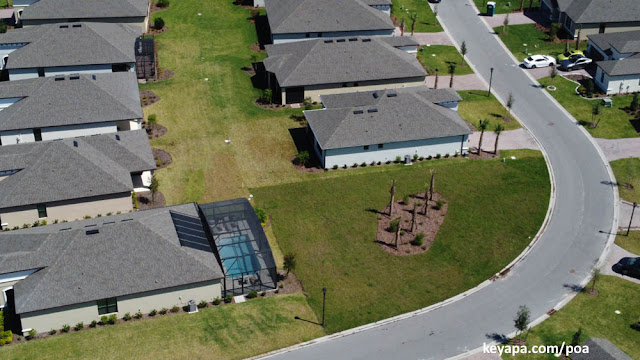A lawn in a lawn right?
 |
| By Kevin Thiele from Perth, Australia |
In Florida however, we were confronted by completely different species, those more adapted to the warmer weather all year round. In our case, a rhizomatous and stoloniferous grass called Stenotaphrum secundatum, which has the local name St. Augustine grass (and various other common names around the world).
From a distance, the major difference is probably the lighter color of the lawn. But when you actually look closely the change in habit is very obvious. S. secundatum is a creeper - its stolons or aboveground horizontal stems allowing it to "crawl" along the ground like some green hued centipede. This behavior is quite unlike its cool season brethren in the north, which at best have underground rhizomes.
I was so taken by this creeping behavior that I potted one, set it down on our lanai, and attempted for a short while to see how far it would stretch along the cement floor in its search for soil. It grew by around 5 cm in 12 days before I had to stop the experiment due to eternal circumstances, but I may repeat the experiment again later.
 |
| Potted grass as it crawls out of the pot and starts to search for soil |
The composition of the lawn also affects how it is viewed even from far away sometimes. For example, in the image below, the lighter green areas are S. secundatum, while the dark lot is likely Paspalum notatum (Bahia grass). The border between the two species was amazingly straight most times, although S. secundatum seems to have the more pronounced tendency to encroach onto the other territory. In addition, I noticed various other plant species (aka weeds in lawn parlance, haha) had a harder time establishing themselves in the dense masses of culms and blades and stolons that S. secundatum creates.
 |
| Lawns from high up |
A third type of turf grass in the community is a very small, fine leaved species used for the golf areas, and the next time I'm there I'll be sure to take a sample and try to ID it. I know some people are quite ambivalent (or even hostile) towards turf grass, but after being in an HOA community that uses various species to populate the landscape, I have started to become quite interested in the ecology of lawn grasses.
More to come on this perhaps.

No comments:
Post a Comment